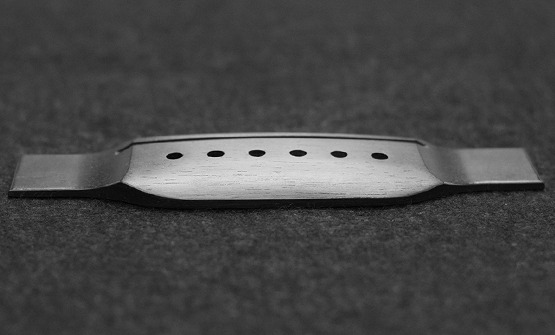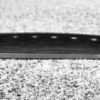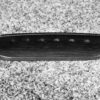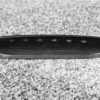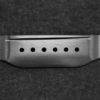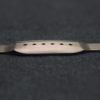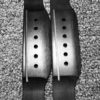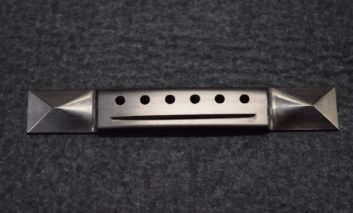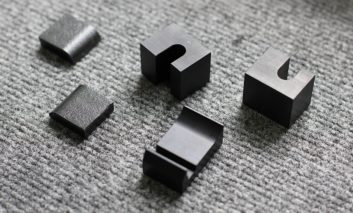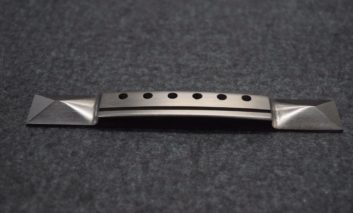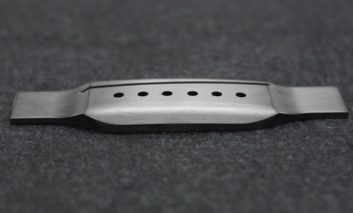Description
Martin began using this bridge in April 1930 and changed to the “40’s” style bridge (also available from us) in mid-1938 (the exact date varies a bit from model to model). If the original bridge is missing or altered beyond recognition, you’ll be safe choosing the 30’s style up until mid-1938.
True to the original form, the radii of the wings are asymmetrical. Oddly, the asymmetry of the footprint remained throughout both decades, but the carving changes significantly. The belly begins to curve off at the bridge pins holes on the ’30’s bridges, making it significantly lighter than it’s 40’s offspring (belly doesn’t begin to curve off until a full 1/4″ behind the pin holes).
Bridges are made of Gaboon and Macassar ebony that was sawn over 50 years ago. Grain is correctly oriented to minimize any chance of checking through pin holes. Ebony is black with no streaking. I finish each bridge by hand.
Make a note on your order if you’d like bridge slightly lower or higher than the stock 11/32″.
